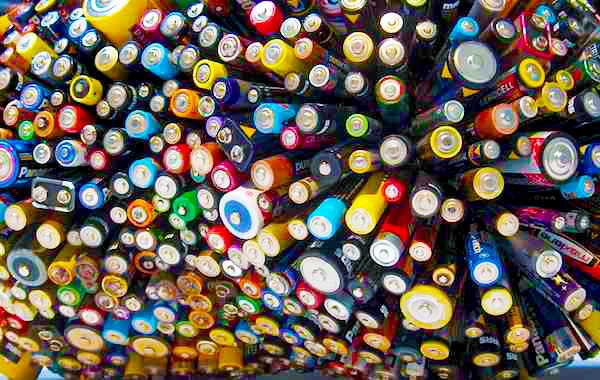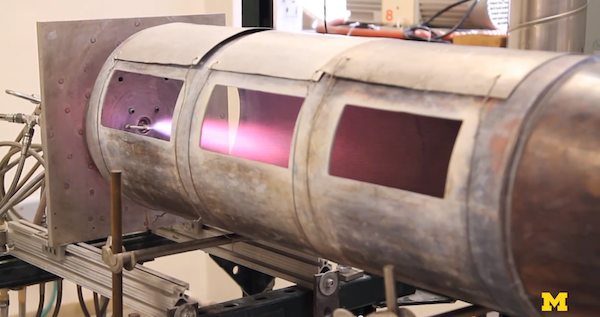
[Image above] Credit: amintore fanfani; Flickr CC BY-NC-SA 2.0
Credit: Michigan Engineering; Youtube
This year, batteries are big. We’ve seen developments that span all aspects of battery tech, including batteries that are super stretchy, batteries that last a decade, batteries that are married to solar cells, batteries that can split water, batteries that use waste sulfur, batteries that repurpose old tires, and much more.
We reported just last week that garnet ceramics may have a place in safer and more efficient next-gen lithium-ion batteries. Those ceramics are better at protecting lithium anodes in aqueous electrolyte solutions.
ACerS member Richard Laine has been working on a scheme to use ceramics to improve even safer solid-state batteries, which completely do away with aqueous solutions altogether. Laine, along with his University of Michigan research group, recently published their findings in the Journal of Power Sources.
Solid-state batteries have been sought after for many years because, by replacing the aqueous electrolyte solution with solid materials, they are less flammable and less heat-sensitive. Making solid-state batteries requires components that are both time and energy intensive to make, however, dampening their commercial success to date.
“With two billion lithium-ion battery cells produced every year, reducing the complexity of the production process, increasing the toughness and temperature range of operation of the product are key steps toward a commercially viable solid-state battery,” says first author Eongyu Yi in a University on Michigan press release.
Laine’s research group has developed an effective new technique to make nanoscale powders for ceramic thin films electrolytes. The technique, called liquid-feed flame spray pyrolysis (LF-FSP), “eliminates the glass-forming, crushing and ball milling steps typical to the production of thin-film ceramic components in solid-state batteries,” according to the release.
The process uses a restrained jet engine to combust doped lithium phosphate Li1.7Al0.3Ti1.7Si0.4P2.6O12 dissolved in alcohol. The resultant soot, a mixed metal oxide nanopowder, is combined with a polymer binder and processed into easy-to-handle thin-films for solid-state batteries.
Asked in an interview why this material, Laine says the “material came to him” a few years ago as one of the “rewards of having former students.” That former student, who now works at a private company, contacted Laine to collaborate on testing the material’s properties.
The material is sintered to full density but remains flexible, Laine says. To manage the density while controlling lithium content, the researchers overdose lithium in the starting composition to allow for lithium to escape. The aluminum, titanium, and silicon dopants modify the defect chemistry, and therefore, the ionic conductivity of the electrolyte.
Film thickness, which can be as thin as 14 microns, is a balance between versatility and performance of thin-films and failure of too-thin-films. Laine says that thinner is not necessarily better, because films that are too thin are more likely to have defects that are deleterious to function.
In addition to potential applications in biomedical devices and in cars, Laine says their new batteries would be well suited for extreme environments, such as down-well applications or hot environments.
The team is now looking for investors to commercialize the batteries on an industrial scale.
Similar advancements and start-ups in solid-state battery tech have cropped up before, but there remain significant challenges in the scale up process to ready these batteries for commercial success.
The paper is “Materials that can replace liquid electrolytes in Li batteries: Superionic conductivities in Li1.7Al0.3Ti1.7Si0.4P2.6O12. Processing combustion synthesized nanopowders to free standing thin films” (DOI: 10.1016/j.jpowsour.2014.07.029).


